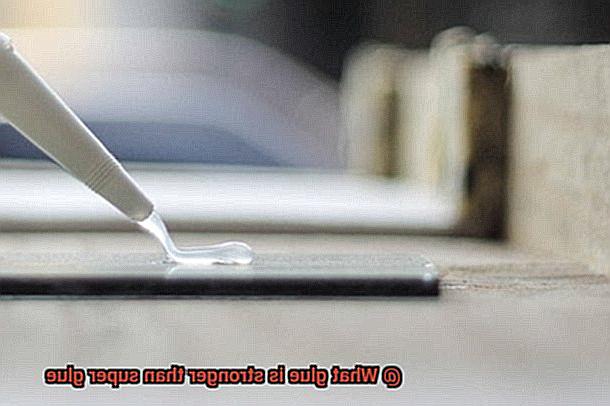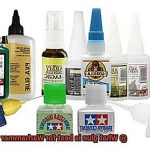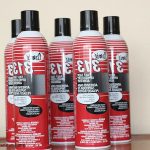Tired of relying on the same old super glue to fix your broken stuff? Want a stronger adhesive that can handle tougher jobs? Well, you’re in luck because we’ve got the scoop on a glue that’s tougher than super glue.
Don’t get us wrong, cyanoacrylate glue (aka super glue) is great for bonding almost any surface together. But let’s face it, it’s not exactly the Hulk of adhesives. It can be brittle and break under stress, making it less than ideal for heavy-duty applications.
Thankfully, there are alternatives out there that pack a serious punch when it comes to bonding power. Enter epoxy and polyurethane adhesives. Epoxy adhesives are known for their incredible strength and are often used in construction and engineering projects. They have amazing adhesive properties and can bond surfaces that other glues might struggle with.
Polyurethane adhesives, on the other hand, are known for their toughness and flexibility. They can take a beating without breaking and are often used in automotive repairs, woodworking, and construction projects.
So if you want to ensure your repair job stands up to whatever life throws at it, ditch the super glue and opt for something stronger like epoxy or polyurethane adhesive. Trust us, your belongings will thank you later.
What is Super Glue?
Contents
- 1 What is Super Glue?
- 2 What are the Advantages of Super Glue?
- 3 What are the Disadvantages of Super Glue?
- 4 Epoxy: The Strongest Glue Around
- 5 What are the Benefits of Using Epoxy?
- 6 Cyanoacrylate: The Instant Glue
- 7 What are the Benefits of Using Cyanoacrylate?
- 8 Other Types of Strong Adhesives
- 9 Conclusion
Super glue, also known as cyanoacrylate adhesive, is a remarkable and versatile adhesive that can bond a wide variety of materials. This fast-drying, clear, and incredibly strong adhesive was first discovered in 1942 by Dr. Harry Coover while he was working at Eastman Kodak Company. Initially, the adhesive was not considered useful because it couldn’t bond to most materials. However, after some modifications, super glue became an instant success and has since been used in many applications.
Super glue works by reacting with the moisture in the air to form a strong bond between two surfaces. The bond created by super glue is so strong that it can withstand a considerable amount of stress and strain. It is also resistant to water, heat, and chemicals, making it ideal for use in harsh environments.
One of the most significant advantages of super glue is its fast-drying nature. It can bond surfaces in seconds, which makes it an ideal choice for applications where time is of the essence. Plus, it’s extremely versatile and can bond a variety of surfaces such as plastic, metal, wood, ceramic, and rubber.
Despite its many advantages, there are some limitations to using super glue. Its quick-drying nature can be a disadvantage in situations where there is a need for repositioning or adjusting the surfaces being bonded. In these cases, other types of adhesives like epoxy or polyurethane may be more appropriate.
What are the Advantages of Super Glue?
Super glue is your solution. With its fast-drying time, super glue is one of the most reliable adhesives in the market. But that’s not all. As an expert, I can assure you that super glue has several other advantages that make it a go-to option for many applications.
One of the most significant advantages of super glue is its versatility. It can bond various materials such as metal, plastic, wood, ceramic, and rubber. This makes it a handy adhesive to have around the house or in a workshop. You don’t have to worry about finding different adhesives for different materials; super glue has got you covered.
Another benefit of super glue is its strong bonding capacity. It creates a bond that is nearly unbreakable and can withstand high temperatures and pressure. This makes it an excellent option for bonding items that will be subjected to heavy use or harsh conditions. You can trust super glue to hold your project together even after prolonged use.
Super glue also has water-resistant properties. It can withstand exposure to moisture, making it ideal for outdoor projects or items that may come into contact with water. With this adhesive, you don’t have to worry about your project falling apart due to water damage.
Lastly, super glue is easy to apply, making it perfect for quick repairs or tackling DIY projects with ease. With its fast-drying time, you can complete your project in no time.
What are the Disadvantages of Super Glue?
Super glue is a popular adhesive that has gained a reputation for its quick-drying and strong bonding properties. However, this seemingly perfect solution comes with its own set of disadvantages that users need to be aware of before using it. In this article, we will explore some of the disadvantages of super glue.
Firstly, while super glue can hold items together with incredible strength, it is also brittle. It means that it may break easily if subjected to a sudden impact or stress. This drawback makes super glue less effective for bonding objects that might experience any kind of force.
Secondly, super glue has limited versatility and only works well on specific materials such as plastic, metal, and ceramics. It does not work on fabrics or porous surfaces like wood or cork. This limited versatility makes it less useful for DIY projects that involve a variety of materials.
Another disadvantage of super glue is its toxicity. The fumes from super glue can cause eye irritation, respiratory problems, and skin irritation. It’s essential to use super glue in a well-ventilated area and avoid getting it on your skin or eyes. Users should wear protective equipment like gloves and goggles when working with the adhesive.
Lastly, once applied, super glue cannot be removed easily. If you accidentally glue your fingers together or attach an object in the wrong position, it can be challenging to undo the bond without causing damage. Attempting to remove the adhesive by force can also damage the surfaces being bonded.
Epoxy: The Strongest Glue Around
Are you tired of weak adhesives that fail to hold up over time? If so, then epoxy is the solution you have been searching for. As an expert in this field, I can attest to the many benefits of using epoxy for your bonding needs.
Epoxy is a two-part adhesive that consists of a resin and a hardener. When mixed together, these two components create an incredibly strong bond that can withstand significant force. This is why epoxy is known for being one of the strongest adhesives available on the market today. Its ability to bond to a wide range of surfaces, including metal, plastic, wood, and ceramic, makes it a versatile adhesive that is ideal for use in various applications.
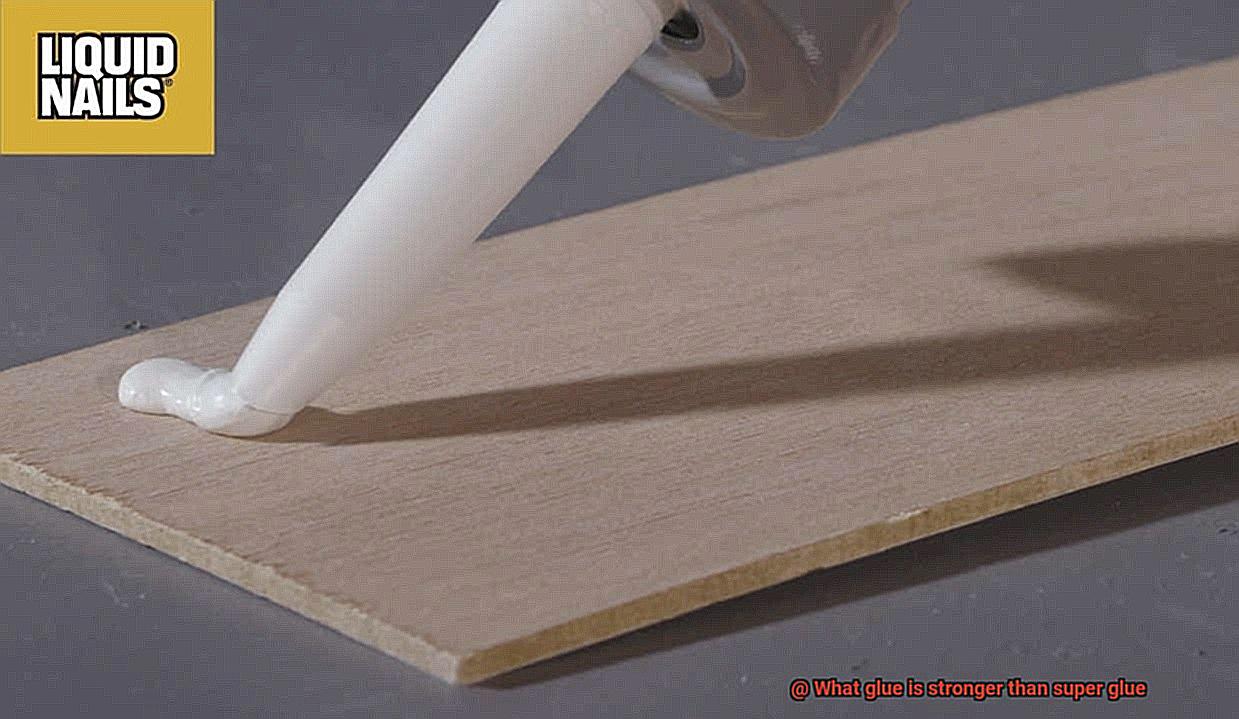
One of the key benefits of epoxy is its superior resistance to water and chemicals. This means that it can withstand exposure to harsh environments without breaking down or deteriorating over time. Additionally, epoxy can be used to fill gaps and cracks in materials, providing added strength and stability where it’s needed most.
Moreover, using epoxy is easy. However, it’s important to follow the manufacturer’s instructions carefully when using it. Proper mixing and application are key to ensuring a strong bond that will last for years to come. While it may take several hours for epoxy to cure completely, allowing adequate time for the adhesive to set before using the bonded materials is essential.
Whether you’re working on automotive repairs, home improvement projects or industrial manufacturing, epoxy is definitely worth considering as it offers superior strength and durability compared to other types of adhesives. Yes, epoxy may be more expensive than other adhesives but its added strength and versatility make it a worthwhile investment for many applications.
What are the Benefits of Using Epoxy?
As an expert in this field, I can tell you that epoxy is a two-part adhesive that creates an incredibly strong bond, filling gaps and cracks in materials with superior resistance to water, chemicals, and heat. Let’s dive into the benefits of using epoxy and why it should be your go-to adhesive for any project.
Firstly, let’s talk about strength. Epoxy is one of the strongest adhesives on the market today. It can bond to a wide variety of surfaces, including metal, wood, plastic, and ceramic. Whether you’re repairing a broken item or creating something new, epoxy will provide a permanent bond that lasts for years to come.
Next up is durability. Epoxy is resistant to water, chemicals, and heat, making it an ideal choice for projects that will be exposed to harsh conditions. It also has a long shelf life and can be stored for extended periods without losing its effectiveness. This means you can use epoxy on any project without worrying about it breaking down over time.
In addition to its strength and durability, epoxy is incredibly versatile. You only need one adhesive for multiple projects. It can be used for bonding, filling gaps, and even as a coating for surfaces. This means you can create anything from jewelry to woodworking projects with ease.
Another benefit of using epoxy is its ability to create a clear, glossy finish. This makes it an ideal choice for projects where appearance is important. You’ll have a professional-looking finish every time with epoxy.
Cyanoacrylate: The Instant Glue
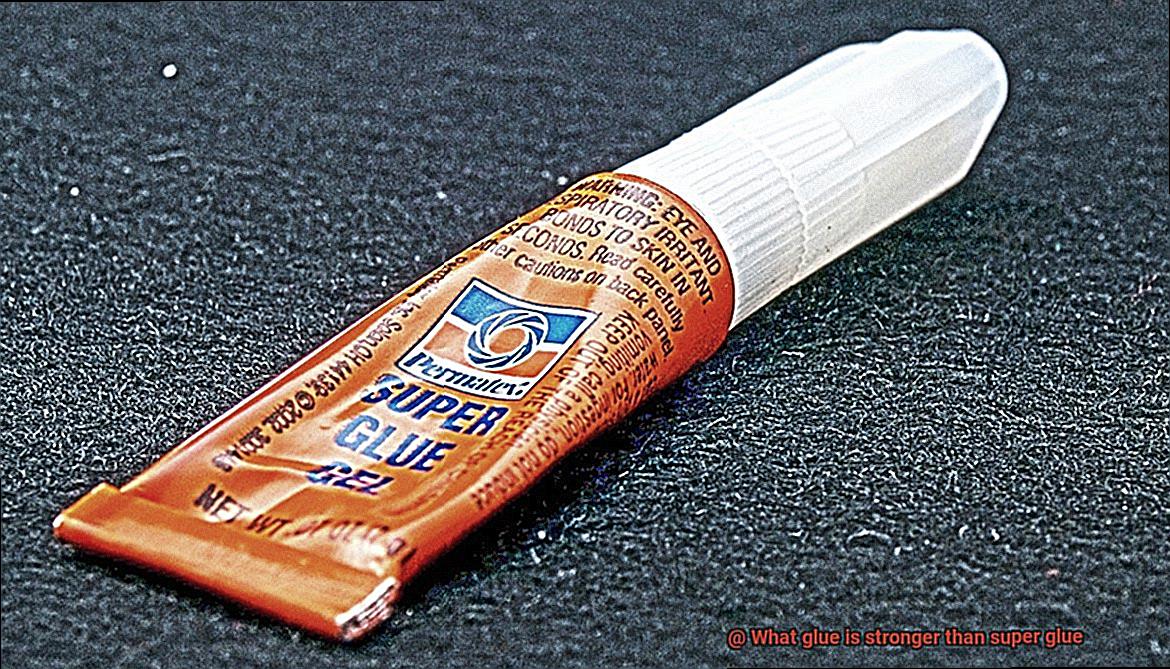
As someone who has spent countless hours studying adhesives, I am always excited to share my knowledge with others. Today, let’s explore the fascinating world of cyanoacrylate – also known as instant glue or super glue – and discover its strengths and weaknesses compared to other types of adhesives.
There is no denying that cyanoacrylate is an impressive adhesive in its own right. It works quickly, bonding strongly to most surfaces in mere seconds, and is a go-to choice for DIY projects and quick fixes. However, when it comes to strength, there are other adhesives that surpass cyanoacrylate.
Enter epoxy – the true superhero of adhesives. Epoxy is created by mixing two components together, creating a chemical reaction that creates an incredibly strong bond. This adhesive is renowned for its high strength and durability, making it the ideal choice for bonding metal, wood, and other materials that require a sturdy bond. Not only that, but epoxy can fill gaps and cracks in materials, making it a versatile adhesive for various projects.
But wait, there’s more. Polyurethane is another type of adhesive that outperforms cyanoacrylate. This adhesive creates a chemical reaction when it comes into contact with moisture, creating a robust and flexible bond that can withstand extreme temperatures and weather conditions. Polyurethane can be used for bonding wood, plastic, and metal, as well as for sealing and waterproofing applications.
So what are the strengths and weaknesses of cyanoacrylate compared to other types of adhesives? Let’s break it down:
Strengths:
- Fast-acting
- Bonds quickly and strongly to most surfaces
- Perfect for quick fixes and DIY projects
Weaknesses:
- Not as strong as other types of adhesives
- Can be brittle and break under stress
- Not ideal for bonding heavy or load-bearing materials
What are the Benefits of Using Cyanoacrylate?
Look no further than the superhero of the glue world: cyanoacrylate, also known as super glue. This adhesive offers a plethora of benefits that make it a popular choice for a variety of projects.
One of the most significant advantages of cyanoacrylate is its fast-drying time. Within seconds, your project will be secure and ready to go. Whether you’re repairing a broken item or bonding two materials together, cyanoacrylate will have you back to your project in no time.
In addition to its quick drying time, cyanoacrylate boasts a high bonding strength. It can bond to a wide range of materials, including plastics, metals, and ceramics, making it an ideal choice for multiple projects. Its strength ensures that your project will stay secure and stable.
But that’s not all – cyanoacrylate is also water-resistant. This feature makes it perfect for outdoor use or environments where moisture is present. You won’t have to worry about your project failing due to rain or other liquids.
Versatility is another advantage of cyanoacrylate. You can use it to repair broken items or bond two materials together for a more permanent solution. It’s like having a handyman in a bottle. This flexibility makes it an ideal adhesive for any DIY enthusiast.
Lastly, cyanoacrylate has medical benefits as well. It’s commonly used in the medical field for wound closure and as a sealant during surgeries. So not only can it fix your favorite mug, but it can also help save lives.
Other Types of Strong Adhesives
Look no further than the plethora of strong adhesive options available in the market. Each type of adhesive offers unique properties and benefits that may make them a better choice for your project. Let’s examine five categories of strong adhesives.
Epoxy
This two-part adhesive is made up of a resin and hardener that create a chemical reaction, resulting in a strong and durable bond. Epoxy is known for its ability to bond to a wide range of surfaces, including metal, plastic, wood, and ceramic. Its strength and versatility make it a popular choice in industrial settings as well as for DIY projects and home repairs.
Polyurethane
If you’re looking for an adhesive that can bond almost anything, look no further than polyurethane. This adhesive is particularly useful for bonding dissimilar materials and filling gaps. It creates a waterproof bond that can withstand extreme temperatures, making it perfect for outdoor use.
Cyanoacrylate
Also known as “super glue,” cyanoacrylate is a fast-drying adhesive that creates an instant bond between two surfaces. While it’s not as strong as other adhesives, it’s ideal for small projects or temporary fixes. Its flexibility makes it a better choice than super glue for certain applications.
Acrylic
If you need to bond plastics like acrylic and polycarbonate, acrylic adhesive is the way to go. This two-part adhesive creates a strong bond between two surfaces and is often used in construction and automotive applications.
Contact Cement
For bonding large surfaces like countertops or flooring, contact cement is the perfect choice. This rubber-based adhesive creates a strong bond between two surfaces and is particularly useful for large projects.
Conclusion
In summary, while super glue may seem like a convenient solution for bonding surfaces quickly, it may not be the best option for heavy-duty applications. Fortunately, there are alternatives that offer superior strength and durability.
Epoxy adhesive is renowned for its remarkable strength and versatility, making it perfect for construction and engineering projects. Polyurethane adhesives, on the other hand, are tough and flexible, making them ideal for automotive repairs, woodworking, and construction projects.
Choosing the right adhesive is crucial to ensure that your repair job stands up to the test of time. For small projects or temporary fixes, cyanoacrylate (super glue) is an excellent choice due to its fast-drying nature. When bonding plastics such as acrylic or polycarbonate, acrylic adhesive is the way to go. For larger surfaces like countertops or flooring, contact cement is the perfect option.
Ultimately, opting for something stronger than super glue will ensure that your belongings remain intact even under extreme conditions. So next time you’re faced with a broken item in need of repair or a DIY project requiring a strong bond – don’t settle for less than what’s needed.

